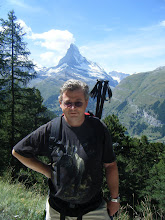Rhinos and cancer
My last post talked about Thailand and ivory but, as I said, we were also in Bangkok to meet our WWF Viet Nam colleagues.
In Viet Nam the current issue is rhinos. Viet Nam lost its last indigenous rhino in 2010 - the last of a separate subspecies of the Javan rhino, found in Cat Tien National Park (now there are less than 50 Javan rhinos left in the world, in a tiny population on Java itself). While the last specimen was lost to poachers, the primary reason for the extinction - over the period since the remnant population was discovered in 1988 - was loss of habitat. Unauthorised clearance, followed by cashew plantations, chipped away at the area occupied by the small population to the point that the poacher's gun was just the coup de grace.
Tragic as this loss is, it seems to have galvanised conservationists in Viet Nam. With the extinction - or near extinction - of several other species in that country (including tigers) they have a lot on their plate. However, Viet Nam is on the centre of the International stage when it comes to rhino conservation because it is the main destination for rhino horn poached from South Africa.
South Africa was long a success story when it came to rhinos. At one point the Southern White Rhino was thought to be extinct, until a population of 100m individuals was discovered in 1895. Today the population numbers over 20,000 and the subspecies has been reintroduced to neighbouring countries. That success is now threatened.
Of course, it happened at a time in South Africa's history that is not one to be proud of - to put it mildly. So one might expect that the current situation is in part a result of the post-apartheid regime. However, the preliminary evidence gives indications that wealthy white syndicates are - at least in part - the drivers behind the current poaching crisis. Whatever the truth in this, the statistics are grim. In 2007, 13 rhinos were poached in South Africa - a negligible figure against the size of the population. That rose to 83 in 2008 and 122 in 2009. At that time, Zimbabwe was the main concern when it came to poaching (it has subsided there subsequently, largely because the remaining herds are "too hard to get"). In 2010, the figure in South Africa shot up to 333, rising to 448 in 2011.Most of this poaching is not happening in privately owned herds but in the large flagship rhino herd in Kruger National Park.
The traditional destination for rhino horn was China but that country has banned trade in rhino horn since 1993 and, while there are debates about how strictly the ban is enforced, it would be hard to account for the scale of the poaching in terms of the potential Chinese market. In fact, the recent surge in poaching arises from rumours in Viet Nam that it cures cancer - a claim that was never made for it in either traditional Chinese or Vietnamese medicine. Unfortunately, the end result is that the horn is on sale openly in the cities. Even though the trade is illegal, no-one has been arrested. In fact, Government officials are now taking it as a designer drug, a cure for hangovers after late night banquets.
As far as the cancer myth goes, we heard that at least some of the high profile people - such as wives of high Party officials - who had taken the horn as a cancer treatment had died anyway. There were also heartrending anecdotes of families selling everything they had to buy rhino horn for an ailing relative and then spending hours every day grinding it down, only to have the victim die in the end. The problem is that cancer is one disease that drives its sufferers - and their loved ones - to try any remedy, even whentheir brain tells them there is no reason to believe it will work.
This was poignantly illustrated when, in the midst of our discussions, one of the staff in our office offered her personal experience. Her father has cancer and she told us that she had been under pressure from family members - including her husband - to try rhino horn as a remedy. The implication was that a good daughter would try anything that had a chance - however remote - of curing her father. And this is the problem. The science tells us that there is no evidence that it cures cancer but when it's you or your relative that is the patient, reason goes out the window and you are prepared to try anything. In fact, she had to say to her husband "Please don't ask me again because if you do I'll say yes."
So the end consumers aren't the villains. No, the villains are those who are exploiting vulnerable people, and contributing to the loss of an iconic animal in the process.


0 Comments:
Post a Comment
Subscribe to Post Comments [Atom]
<< Home